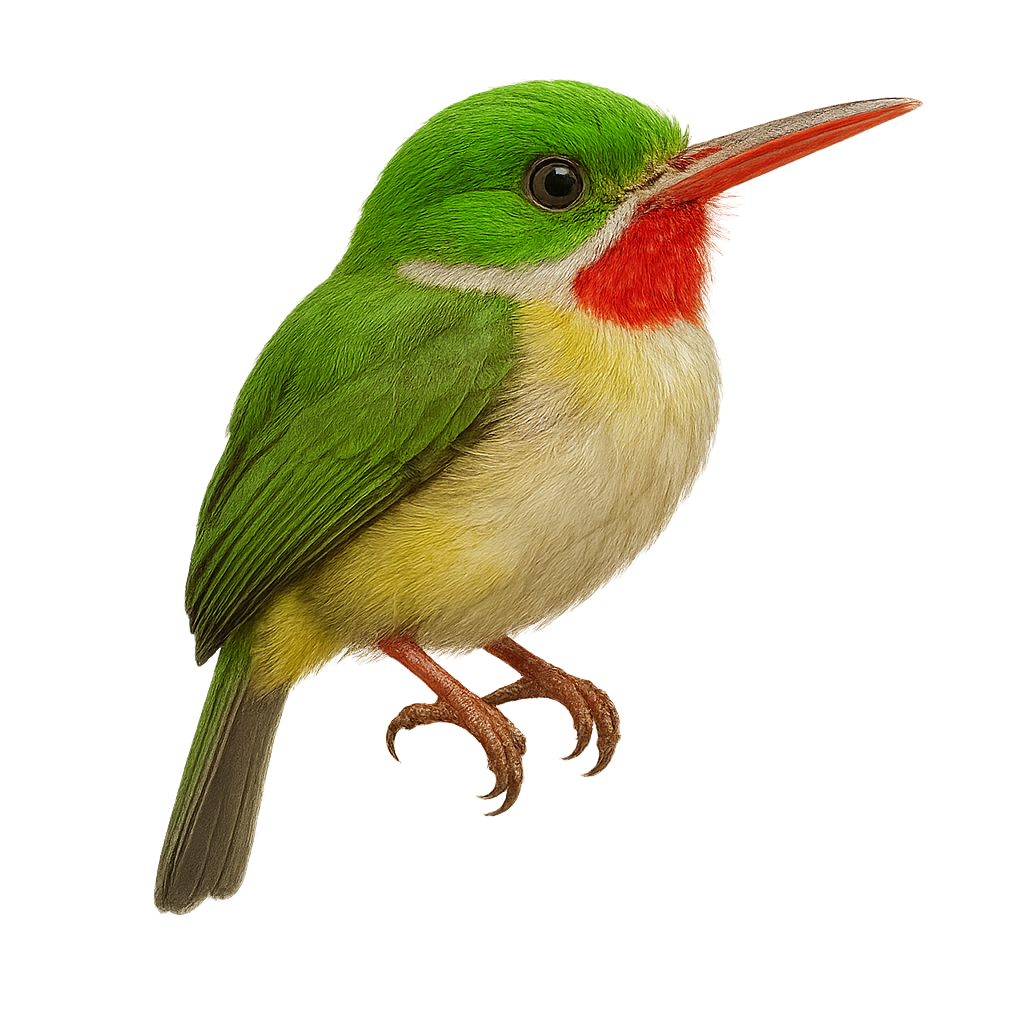Your wildlife photography guide.
Explore the broad-billed tody in detail, study its behavior, prepare your shots.
Where to observe and photograph the broad-billed tody in the wild
Learn where and when to spot the broad-billed tody in the wild, how to identify the species based on distinctive features, and what natural environments it inhabits. The WildlifePhotographer app offers tailored photography tips that reflect the broad-billed tody’s behavior, helping you capture better wildlife images. Explore the full species profile for key information including description, habitat, active periods, and approach techniques.
Broad-billed Tody
Scientific name: Todus subulatus

IUCN Status: Least Concern
Family: TODIDAE
Group: Birds
Sensitivity to human approach: Suspicious
Minimum approach distance: 5 m
Courtship display: April to May
Incubation: 20-21 jours
Hatchings: April to June
Habitat:
Tropical rainforests, dry wooded areas
Activity period :
Primarily active during the day, with peak activity in the morning and late afternoon.
Identification and description:
The Broad-billed Tody, Todus subulatus, is a small, colorful bird endemic to the island of Hispaniola, which is shared by Haiti and the Dominican Republic. It is characterized by its bright green plumage on the back, a white belly, and a striking red throat. Its long, slender bill is adapted for catching insects, its primary food source. This small bird measures about 10 to 11 cm in length and weighs between 5 and 7 grams. It primarily inhabits tropical rainforests but can also be found in drier wooded areas. The Broad-billed Tody is a territorial bird, often seen alone or in pairs, and is known for its high-pitched, repetitive song.
Recommended lens:
400mm – adjust based on distance, desired framing (portrait or habitat), and approach conditions.
Photography tips:
To photograph the Broad-billed Tody, it is advisable to use a telephoto lens of at least 400mm to capture detailed images of this bird, often perched in trees. Be patient and discreet, as this bird is suspicious but can be observed closely if you remain still. Look for it in tropical rainforests or dry wooded areas, where it is more active during the day. Take advantage of the natural morning light to achieve vibrant colors and good contrast in your photos.
The WildlifePhotographer App is coming soon!
Be the first to explore the best nature spots, track rutting seasons, log your observations, and observe more wildlife.
Already 1 429 wildlife lovers subscribed worldwide

